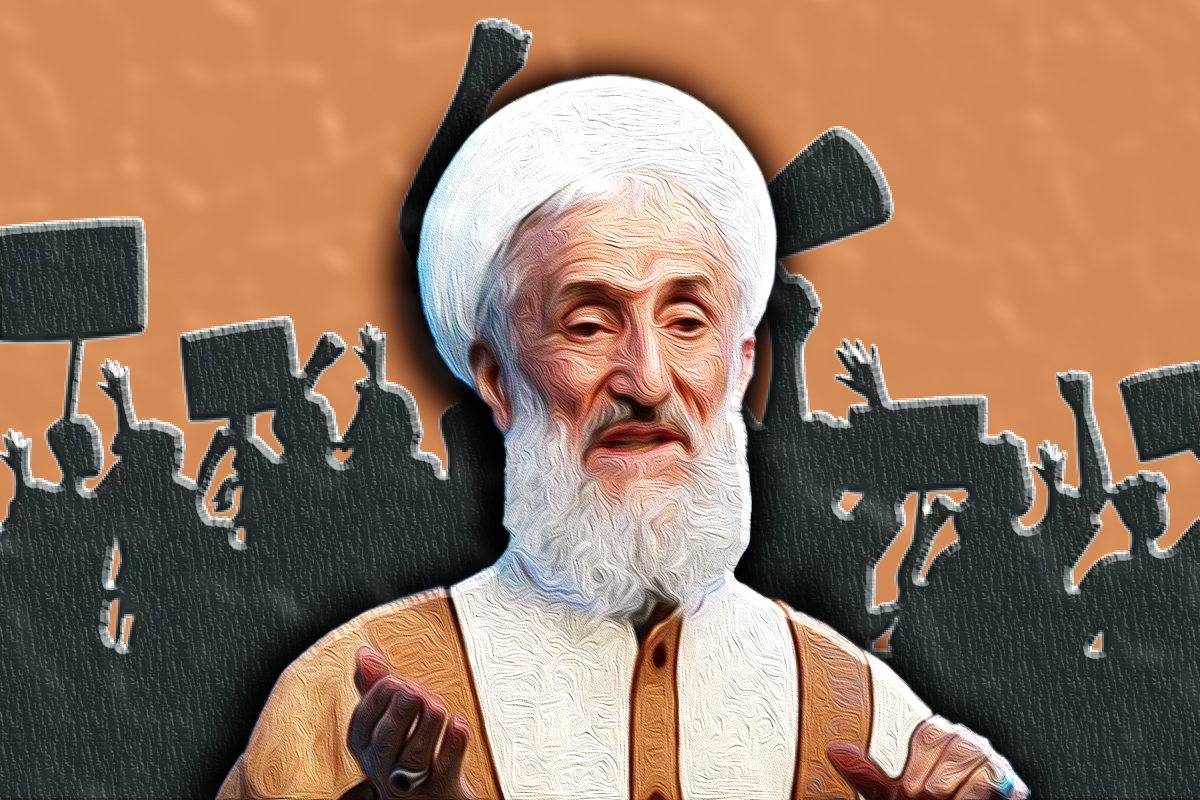A return to the Friday pulpit by Kazem Seddiqi, the interim Friday prayer imam of Tehran embroiled in a controversial corruption case, has ignited widespread negative reactions in Iran. Many interpret this move as a clear statement that the Nezam refuses to sever ties with its allies, irrespective of their alleged corruption and controversies. In the aftermath of the 2022 protests, the dynamic between the citizens and the Nezam increasingly resembles a battle. There are certain bastions like hijab, and sensitive cases like Seddiqi, both closely linked to the Nezam’s identity, for which the Nezam is prepared to fight tooth and nail. In spite of denials by hardline outlets, images from the sermon in Tehran show little more than a smattering of worshipers, a stark contrast to the dense crowds of the past.
Although corruption is not uncommon among top Nezam officials, Seddiqi’s case is particularly notable. Not only does he represent the supreme leader, he also heads the task force responsible for enjoining good and forbidding evil, i.e., enforcing hijab. Prosecuting him or acknowledging his corruption could undermine claims about the divine roots and infallibility of the vali-ye faqih, not to mention the core ideology of the Nezam. Earlier, an IRGC media outlet went so far as to describe the scandalous revelations about Seddiqi as an assault on the Nezam’s core, denying any misconduct on the cleric’s part and blaming an unnamed person for betraying him. It also urged intelligence and security agencies to expose the supposed plots of the enemies. The outlet claimed that since the organizers of the 2022 protests perceived the inner circle of devout Muslims and Nezam loyalists as instrumental in thwarting their efforts to overthrow the regime, they are now targeting these key figures, including Seddiqi. This rationale mirrors the Nezam’s renewed stance on the enforcement of hijab, viewing noncompliance as a victory for the protesters of the Woman, Life, Freedom movement.
When Imam Sadeq University canceled Seddiqi’s scheduled speech at a significant religious event, the public saw it as a win for their sentiment. However, the supreme leader’s subsequent invitation to Seddiqi to an annual meeting with Nezam officials and his return to the Friday pulpit sent a contrary message. While some saw this as a deliberate poke in the eye to the public, many believe it reflects the Nezam’s strategy for survival. Sociologist Mohammad Fazeli argues that the regime’s cohesion relies on distributing rentier opportunities to loyalists in exchange for their support, often ignoring public demands for accountability. For some, this pattern, evident in the cases of Seddiqi and others like Majles Speaker Mohammad-Baqer Qalibaf, recalls the approach of the Shah, who increasingly maintained power through a tight-knit group of loyalists, disregarding public dissatisfaction. Mehran Sowlati, another sociologist, predicts that the societal divide, exacerbated by recent protests and elections, will persist. With the Nezam’s dwindling hope of regaining the majority’s support, it continues to disregard the majority’s demands, relying instead on a loyal minority. This approach considers society at large a threat, refusing to retreat on any front.
However, the noticeable decline in attendance at Tehran’s Friday prayers when Seddiqi took the pulpit likely came as an unpleasant surprise to Tehran’s decision-makers. The reformist outlet Ensaf News reported mixed reactions among attendees, with Seddiqi attempting to defend himself against land grab accusations and advocate forcefully against corruption and hijab violations. However, younger attendees remained skeptical, calling for transparency and expressing hope that Seddiqi would not return to any pulpit. A noteworthy Telegram post from hardline sources echoed this sentiment, revealing that even within the religious community, doubts about Seddiqi linger and suggesting that the policy-making council of Friday prayer imams should have delayed his return to address the concerns within this important community.







